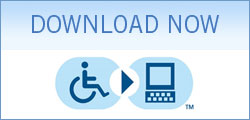(Echocardiography, Holter Monitors, ECG’s, BP Monitors)
Phone: 416-461-9471 ext 2320
Services
By appointment (Age 16 years and up)
- Echocardiogram (Echo)
- Ambulatory (24Hour) Blood Pressure Monitoring (ABPM)
- Holter Monitor
Walk-in (No appointment required)
- Electrocardiogram (ECG/EKG) – 16 years and up (8:30am to 5pm; Mon-Fri)
***************************************************************************************************************************************************************************************************
Services – Echocardiogram (Echo)
An echocardiogram is a non-invasive procedure that uses sound waves (ultrasound) to evaluate how well the heart is working. Gel is applied to the chest and a transducer (wand-like apparatus) is moved over the chest area to produce an image of the internal structures of the heart. The test will take approximately 30 minutes.
This test will help the doctor to evaluate:
- how well the heart is moving,
- how well the valves are working, and,
- the size of the heart and its pumping chambers (ventricles).
Patient Preparation
Appointments are necessary.
What you need to do before your appointment:
- Bring any documentation your family doctor gave you including the referral requisition.
- Bring your provincial health card.
Languages
English
****************************************************************************************************************************************************************************************************
Services – Holter Monitor
Holter monitoring is a continuous, twenty-four hour electrocardiographic (EKG) recording of the rhythm of the heart. Electrodes are placed on the chest area with the leads attached to a small recorder. The patient will keep a 24-hour diary to record daily activities and any symptoms experienced. It will take 15 minutes to have the monitor put on. The patient will return the next day to have the monitor removed.
This test will help the doctor evaluate the type and amount of irregular heartbeats during regular activities, exercise and sleep.
Patient Preparation
Appointments are necessary.
What you need to do before your appointment:
- Bring any documentation your family doctor gave you including the referral requisition.
- Bring your provincial health card.
Languages
English
**************************************************************************************************************************************************************************************************
Services – ECG
An electrocardiogram is a non-invasive test that records the electrical activity of the heart. The electrical activity is related to the impulses that travel through the heart that determines the heart’s rate and rhythm. Electrodes are placed on the chest, arms and legs. The test takes about five to ten minutes.
This test will help the doctor to evaluate the patient’s cardiac condition by answering the following:
- Is there a decreased supply of blood and oxygen to the heart?
- Has a heart attack occurred?
- What part of the heart was damaged?
- Are there are any irregular heartbeats or rhythm?
Patient Preparation
Appointments are necessary.
What you need to do before your appointment:
- Bring any documentation your family doctor gave you including the referral requisition.
- Bring your provincial health card.
Languages
English
********************************************************************************************************************************************************************************************************
Services – Blood Pressure Monitoring (ABPM) – (Not covered by OHIP)
Ambulatory blood pressure monitoring (ABPM) takes numerous readings of your blood pressure over a 24-hour period. It provides accurate and reliable information and can give you and your doctor a truer picture of your blood pressure than occasional visits and readings taken at your doctor’s office. Many patients develop so called “white coat syndrome” while visiting the doctor’s office. This can cause blood pressure readings to be falsely elevated.
While blood pressure readings taken occasionally at the doctor’s office may be able to signal a problem, ABPM provides a more comprehensive picture of actual blood pressure status. It’s also a better predictor of organ damage and heart problems caused by hypertension than standard blood pressure test. This means you and your doctor have solid information to rely on when considering treatment options. Before embarking upon a lifetime of treatment with medication, you should ensure that your blood pressure is truly elevated.
The monitor is a small device worn in a pouch that has a blood pressure cuff attached to it. The cuff is fitted on the patient’s arm and inflates and deflates automatically throughout the 24-hour period it is worn. Usually, your heart rate and blood pressure will be measured at 15 to 30 minute periods during the day and every 30 minutes to one hour at night. Although you may notice the first few times the cuff inflates, you will soon become used to the monitor. Most people find them very easy to wear.
You will need to return to the clinic the next day to have the machine removed.
This test is not covered by the Ontario Health Insurance Plan (OHIP). Most insurance plans will cover the cost.
Patient Preparation
Appointments are necessary.
What you need to do before your appointment:
- Bring any documentation your family doctor gave you including the referral requisition.
- Bring your provincial health card.
Languages
English
